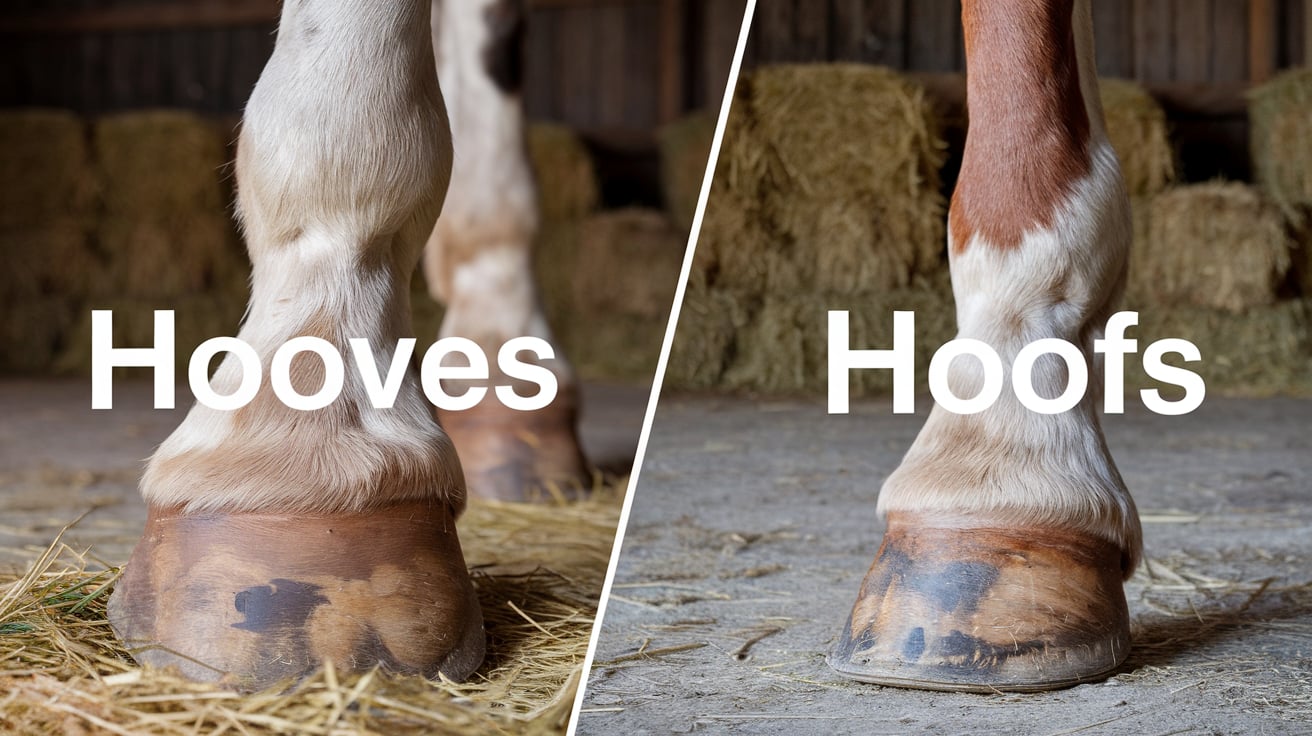The Great Debate: Hooves vs. Hoofs
Language evolves over time, leading to differences in spelling, pronunciation, and even pluralization. One such case is the debate between “hooves” and “hoofs.” If you’ve ever wondered which form is correct and when to use it, you’re not alone! While both variations exist, context plays a vital role in determining the right choice.
In this article, we’ll explore the origins, usage, and preferences for these plural forms, highlighting their role in modern writing and different English variations.
Understanding the Basics of Plural Forms
The word hoof refers to the hard foot covering found on animals like horses, cows, and deer. However, its plural form can be written as either “hooves” or “hoofs.” But which one is correct?
- Hooves: The most commonly accepted plural form in contemporary English, widely used in formal and professional contexts.
- Hoofs: A less common alternative, often appearing in informal speech, historical texts, or specific regional dialects.
English pluralization follows certain patterns, but irregular nouns like hoof sometimes deviate from these norms, creating multiple acceptable forms.
Read More About This Article: Payor vs. Payer: Definitions, Differences, and Practical Applications
Why Do Both Plural Forms Exist?
The existence of both “hooves” and “hoofs” is a result of linguistic evolution. Historically, English developed irregular pluralization for words ending in -f, much like:
- Leaf → Leaves
- Wolf → Wolves
- Shelf → Shelves
“Hooves” follows this pattern, making it the preferred modern choice. However, “hoofs” remained in use, particularly in older English and certain dialects.
American vs. British English Preferences
The choice between “hooves” and “hoofs” can vary depending on regional English variations.
Regional Trends:
- American English: “Hooves” is overwhelmingly preferred in books, media, and academic writing. “Hoofs” occasionally appears in casual speech or historical contexts.
- British English: “Hooves” is the dominant form, but in certain rural dialects, “hoofs” can still be heard.
Across both American and British English, “hooves” is considered the standard choice in contemporary writing.
When to Use Hooves vs. Hoofs
Formal vs. Informal Writing
Your choice depends largely on the tone and setting of your writing.
- Formal Writing: Use “hooves” in academic papers, business reports, and professional communication.
- Informal Writing: “Hoofs” may appear in casual storytelling, personal anecdotes, or older literary styles.
- Historical Texts: Older documents and classic literature may use “hoofs” to reflect past linguistic norms.
Examples:
- Formal: “The horse’s hooves struck the cobblestone road with a rhythmic clatter.”
- Informal: “The sound of hoofs echoed through the quiet village.”
Hooves vs. Hoofs in Everyday Usage
In modern writing, “hooves” has become the clear favorite. Writers and speakers tend to use it for consistency and clarity.
Common Usage Examples:
✅ “The deer’s hooves left tracks in the snow.” (Preferred) ✅ “The cow’s hoofs were muddy after the rain.” (Acceptable but less common)
Quick Comparison Table
| Term | Popularity | Common Contexts | Example Sentence |
|---|---|---|---|
| Hooves | High | Formal, professional, everyday use | “She admired the horse’s shiny hooves.” |
| Hoofs | Low | Informal, historical, niche use | “The clatter of hoofs startled the farmer.” |
Style Guides and Writing Standards
Prominent style guides, including The Chicago Manual of Style and AP Stylebook, recommend using “hooves” as the standard plural form. This aligns with modern English trends favoring consistency.
However, creative writers might still choose “hoofs” for a stylistic or nostalgic effect, especially in historical fiction.
Case Study:
- In an equestrian care article, a writer used “hooves” exclusively to align with professional standards.
- A novelist writing about a 19th-century farm opted for “hoofs” to maintain historical accuracy.
Rural Dialects and Informal Usage
In rural communities where traditional English dialects persist, “hoofs” may still be used. Farmers, older generations, or regions with a strong oral storytelling tradition might favor this form.
Example from Literature:
In classic novels or regional poetry, “hoofs” adds a rustic charm:
“The clatter of hoofs on cobblestones announced the rider’s arrival.”
While quaint, such usage remains limited in contemporary English.
How to Choose the Right Plural Form
When faced with the choice between “hooves” and “hoofs,” consider these factors:
| Scenario | Best Option | Explanation |
|---|---|---|
| Academic writing | Hooves | Aligns with modern norms and style guides. |
| Historical fiction | Hoofs | Adds authenticity to older settings. |
| Professional communication | Hooves | More polished and widely accepted. |
Quote:
“Language reflects the times, and while ‘hoofs’ carries historical charm, ‘hooves’ reigns supreme in present-day English.”
Conclusion
The debate between “hooves” and “hoofs” may seem minor, but it reflects broader shifts in English usage. Understanding these nuances helps ensure your writing is clear, accurate, and suitable for your audience.
In most cases, “hooves” is the best choice—whether you’re writing about farm animals, equestrian topics, or describing the hard foot covering of various creatures. However, if your context is historical or informal, “hoofs” might still be a valid option.
Final Thought:
Let your audience and context guide your decision. After all, great writing isn’t just about grammar—it’s about making an impact!
Additional Resources:
- Comprehensive Guide to Irregular Plural Forms
- Modern English Usage Trends
- How to Avoid Common Spelling Mistakes
